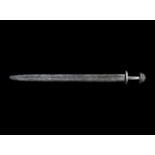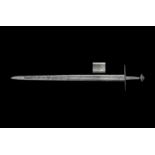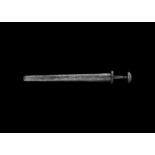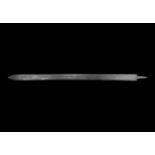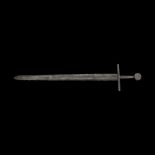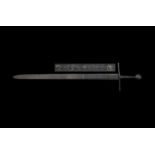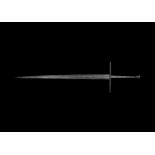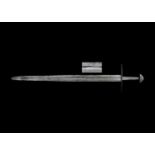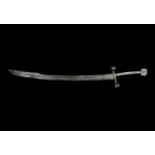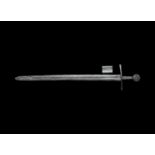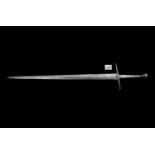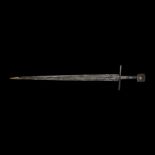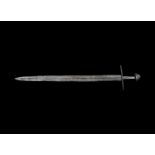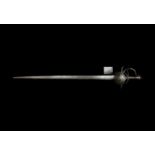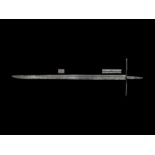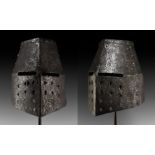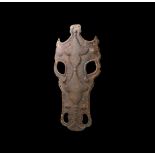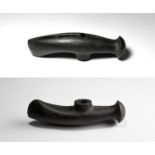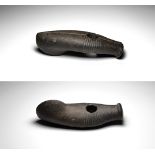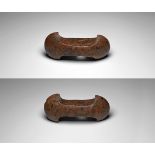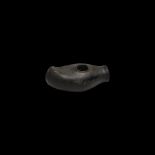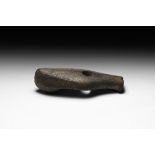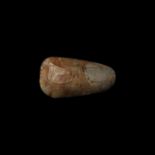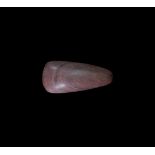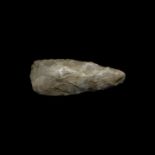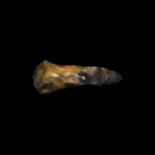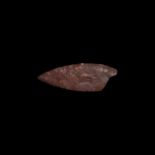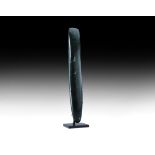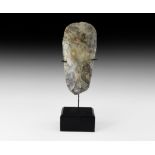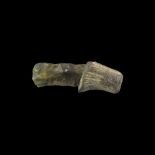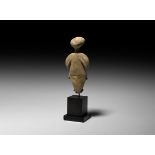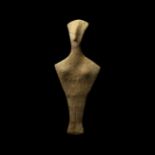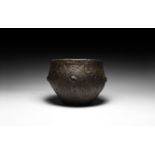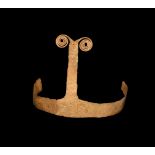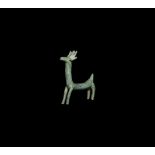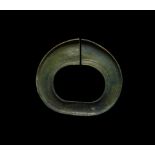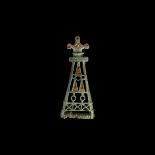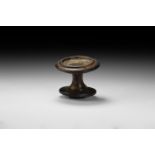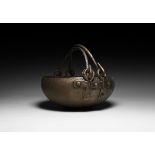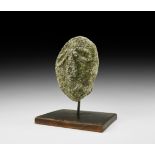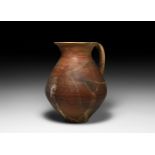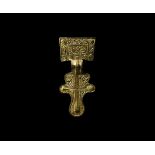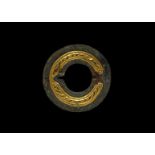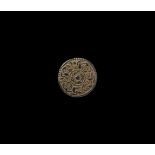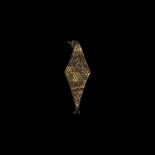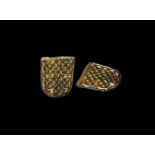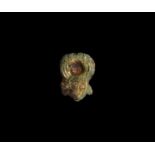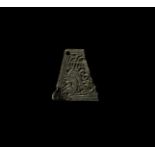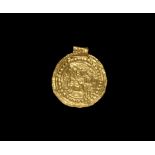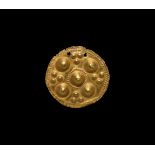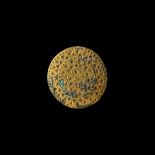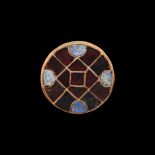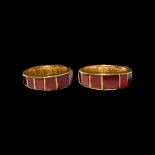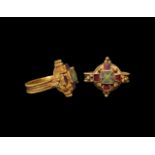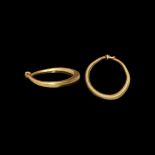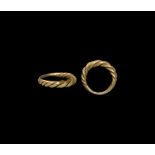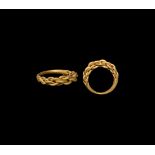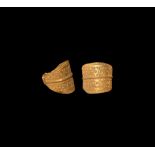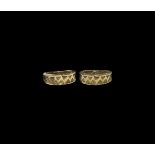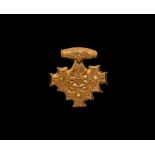Refine your search
Estimate
Category
- Greek, Roman, Egyptian & Other Antiquities (2960)
- Jewellery (335)
- Sculpture (88)
- Arms, Armour & Militaria (64)
- Coins (47)
- Metalware (46)
- Collectables (43)
- Taxidermy & Natural History (26)
- Chinese Works of Art (25)
- Glassware (21)
- Ceramics (19)
- Books & Periodicals (17)
- Vintage Fashion (13)
- Scientific Instruments (11)
- Salvage & Architectural Antiques (9)
- Silver & Silver-plated items (9)
- Lighting (8)
- Clocks (7)
- Ethnographica & Tribal Art (7)
- Russian Works of Art (6)
- Indian Works of Art (5)
- Sporting Memorabilia & Equipment (5)
- Textiles (5)
- Islamic Works of Art (3)
- Stamps (3)
- Cameras & Camera Equipment (2)
- Musical Instruments & Memorabilia (2)
- Prints (2)
- Classic Cars, Motorcycles & Automobilia (1)
- Furniture (1)
- Japanese Works of Art (1)
- Maps (1)
- Models, Toys, Dolls & Games (1)
- Oil, Acrylic paintings & Mixed Media (1)
- Tools (1)
Filtered by:
- Item Type
- List
- Grid
A subscription to the Price Guide is required to view results for auctions ten days or older. Click here for more information
Viking Double-Edged Sword
8th-9th century AD. A double-edged sword of Petersen's Distinctive Type 2 with tapering broad blade and shallow fullers, boat-shaped lower guard, ...
Mid 10th-mid 13th century AD. An iron double-edged Oakeshott's Type X and Petersen's Type X sword with elegant tapering blade and well-formed full...
Viking Single-Handed Sword
10th century AD. An iron double-edged sword of possibly Petersen's Type X, with pattern-welded blade and shallow fuller; boat-shaped crossguard gr...
16th-17th century AD. A sword blade with triple fullers for the upper half, reducing to a single central fuller almost at the point; both sides an...
Medieval Single-Handed Sword
Late 11th-early 12th century AD. A well-balanced iron double-edged sword of Oakeshott's Type XI or XII with gently tapering profile and round poin...
Late 13th century AD. An iron sword of Oakeshott's Type XIb or XII with double-edged blade and tapering profile with rounded point, shallow fuller...
Medieval Two-Handed Long Sword
14th-15th century AD. A two-handed sword of Oakeshott Type XVII, long diamond-section blade with fullers, straight guard of Oakeshott Style I, lon...
12th century AD. An elegant sword of Oakeshott's Type XI with long blade and well-marked fuller with an inlaid arrow motif, parallel-sided lower g...
Late 15th century AD. A rare curved single-edged Hungarian sword of Grosses Messer typology, with a late Gothic maker’s mark on both sides of the ...
12th-13th century AD. A beautifully proportioned double-edged iron sword of Oakeshott's Type XI with tapering profile and rounded point, shallow f...
Early 14th-early 15th century AD. An iron longsword of Oakeshott's Type XV.A or XVIII with tapering blade and shallow fullers, the blade inlaid wi...
Medieval Single-Handed Sword
Late 13th-early 14th century AD. An iron longsword of Oakeshott's Type XIIa with tapering blade and narrow fullers, edges of the blade with battle...
Medieval Single-Handed Sword
11th-12th century AD. A long iron sword of Oakeshott's Type XI with double-edged blade and narrow fullers, parallel-sided crossguard with tapering...
Late 16th century AD. A rapier sword, possibly of Italian manufacture, straight double-edged blade with maker's mark of a stylised flower below th...
Late 15th-early 16th century AD. An single-edged iron sword possibly of German origin with 16th century hilt and pointed blade, two irregular full...
Medieval German Great Helm
Early 14th century AD. An impressive iron great helm of later typology, composed of five plates rivetted together; T-shaped nose guard with cross-...
Islamic Iron Chamfron
17th-18th century AD. A naturalistic iron chamfron with piercings for nostrils and eyes, four attachment holes to the edges. See Mohamed, B., The ...
Neolithic, late 3rd-early 2nd millennium BC. A large and finely polished boat-shaped axe in dark greenstone, with expanded asymmetric convex cutti...
Neolithic, late 3rd-early 2nd millennium BC. A large and finely polished boat-shaped axe in dark grey stone, with expanded asymmetric convex cutti...
Neolithic, 3rd-2nd millennium BC. A finely polished double-bitted stone axe with convex cutting edges flaring down into central rectangular sectio...
Neolithic, 3rd-2nd millennium BC. A finely polished battle axe in grey-green stone with asymmetric convex cutting edge curving to circular collare...
Late 3rd-early 2nd millennium BC. A large and finely polished boat-shaped axe in dark grey stone, with expanded asymmetric convex cutting edge tap...
Neolithic, 7000-4000 BP. A finely polished axe of lentoid section with tapering edges and convex butt and convex cutting edge, showing some flakin...
Neolithic, 3rd-2nd millennium BC. A highly polished stone axehead with convex cutting edge tapering to a rounded butt; in a striated dark red ston...
Neolithic, 7th-4th millennium BP. A finely knapped axe with polished cutting edge of lentoid section with edges tapering from bluntly pointed butt...
Mesolithic, 15000-7000 BP. A large finely knapped axe or adze with flaring, wide and offset convex cutting edge, of generally rectangular section,...
Neolithic, 7th-4th millennium BP. A beautifully knapped and very lightly polished bifacial dagger blade of pointed oval form with razor-sharp edge...
Long Stone Age Polished Axehead
Neolithic, 5th-3rd millennium BC. A very long and superbly polished veined greenstone axe, probably of European origin, with slightly convex cutti...
Stone Age Danish Hand Axe
Nordic Passage Grave Culture, Lower Neolithic, 5th-4th millennium BC. A substantial knapped and polished chert axe blade with rounded butt, curved...
Early Neolithic, 8000-6000 BP. A knapped axe with very light polish to convex cutting edge only, of rectangular-section with parallel edges and a ...
3rd millennium BC. A carved marble idol; arms bent at the elbow where a contrast in the size of the upper and lower arm is apparent; wide hips wit...
Anatolian Large Idol
4th-3rd millennium BC. A fine grained marble figure of a stylised female; flat, fan-shaped head with long prominent nose ridge; flat lozenge-shape...
Stone Age Corded Ware Jar
Early 3rd millennium BC. A substantial squat ceramic jar with bulbous body decorated with incised panels of linear decoration, U-shaped panels wit...
2nd millennium BC. A sheet gold diadem or possibly gold over silver with rising central element terminating in spectacle scrolls to sides; surface...
Bronze Age Stag Statuette
1st millennium BC. A bronze figurine of a stylised stag with elongated body and neck. 44 grams, 61mm (2 1/2"). Private collection, home counties, ...
3rd-1st century BC. A bronze penannular bracelet with flange to both rims and bifacial ornament, bands of punched pellet and saltire detailing to ...
3rd-5th century AD. A Kiev culture bronze openwork brooch formed with geometric panels of red enamel and voids, trapezoidal body with cruciform fo...
Iron Age Celtic La Tène Horn Cap
2nd century BC-early 1st century AD. A hollow-formed bronze staff or sceptre head of 'cotton reel' form, comprised of separate components, a broa...
Early Iron Age Celtic Cauldron
9th-8th century BC. A Central European bronze cauldron of bulbous form with dimpled base, two circumferential bands with chevrons below the rim; t...
1st century BC-1st century AD. A carved limestone head with slanting lentoid scooped eyes, reserved vertical nose and vestigial crescent mouth; mo...
Iron Age Iberian Bichrome Vessel
3rd-2nd century BC. A ceramic vessel with biconical body, strap handle and trumpet rim; body decorated with red painted scene of two mounted hunts...
6th century AD. An excessively rare gilt-bronze great square-headed brooch of Hines's Class I comprising a trapezoidal headplate with stamped and ...
Anglo-Saxon Gilt Annular Brooch
6th century AD. An exceptional parcel-gilt bronze annular brooch formed as a slightly convex underside, flat upper face with recessed crescent, ho...
Later 6th-7th century AD. A bronze disc mount with low-relief ornament; the central boss surrounded by four bird-head motifs in two addorsed pairs...
8th century AD. A gilt copper-alloy lozenge plate brooch with integral coiled pin-lug and catchplate; panels of gilt geometric 'Greek key' pattern...
8th century AD. A gilt-bronze D-shaped tag or strap end with chip-carved knotwork motif. Cf. Wilson, D. M., Anglo-Saxon Ornamental Metalwork 700-1...
7th century AD. A gilt-bronze mount depicting a facing human mask with curved horns above the crown terminating in birds' heads, and small lateral...
Later 7th-8th century AD. A flat gilt-bronze trapezoidal mount section with two attachment holes; chip-carved decoration including a running guill...
5th-6th century AD. A sheet gold discoid pendant with repoussé ornament including pellets to the rim, ring of bosses enclosing central scene with ...
4th-8th century AD. A gold foil disc pendant with doubled band of pellets to the rim, five large bosses and four interstitial groups of three smal...
Viking Gold Clad Stamped Roundel
10th-12th century AD. A bronze discoid panel with concentric bands of stamped triangles and pellets, stud to the reverse. 12 grams, 28mm (1"). Fro...
6th century AD. A gold disc plaque with three loops to the reverse, cloisonné cells in a cruciform arrangement with garnet and possibly later lapi...
5th-7th century AD. A substantial gold finger ring, square in section with fifteen graduated inset garnet or glass cloisons in cells to the outer ...
5th century AD. A gold finger ring with filigree hoop and ribbed borders, disc plaque with beaded wire rim, drum-shaped bezel with granules on tub...
9th-11th century AD. A Viking or Late Saxon gold ring with tapering hoop, the ends twisted around the shank. Cf. Proceedings of the Suffolk Instit...
Viking Gold Twisted Rod Ring
9th-12th century AD. A gold finger ring of twisted gold rods, forge-welded on the underside. 12.41 grams, 28.40mm overall, 20.74mm internal diamet...
Viking Gold Multi-Strand Ring
9th-12th century AD. A gold finger ring with bezel formed of braided wires, forge-welded underside. 13.46 grams, 28.95mm overall, 20.10mm internal...
9th-11th century AD. A flat-section gold ring with broad plaque and tapering ends coiled about each other; a raised band across centre, flanked by...
10th-12th century AD. A gold finger ring with tapering hoop, flange borders, graduated stamped detailing of a triangle with three pellets. 15.14 g...
Viking Gold Triple Cross Pendant
10th century AD. A hollow-formed gold pendant comprising three crosses with central bosses flanking a central entwined cross motif; the body decor...

